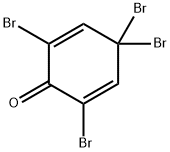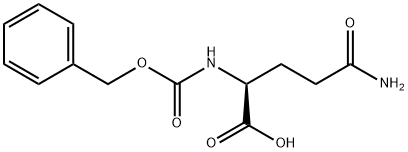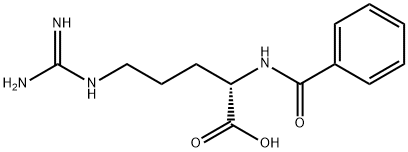1,4-DIAMINOBUTANE
Synonym(s):1,4-Butanediamine;1,4-Diaminobutane;Putrescine;Tetramethylenediamine
- CAS NO.:110-60-1
- Empirical Formula: C4H12N2
- Molecular Weight: 88.15
- MDL number: MFCD00008235
- EINECS: 203-782-3
- SAFETY DATA SHEET (SDS)
- Update Date: 2024-12-18 14:15:30

What is 1,4-DIAMINOBUTANE?
Description
Putrescine (butane-1,4-diamine) and cadaverine (pentane-1,5-diamine) are foul-smelling compounds produced when amino acids decompose in decaying animals. They are also found in small amounts in living cells. Putrescine is formed by the decarboxylation of ornithine and arginine; cadaverine by the decarboxylation of lysine. L. Briege and O. Bocklisch isolated both compounds in 1885 and A. Ladenburg prepared them soon afterward.
Chemical properties
colourless liquid
The Uses of 1,4-DIAMINOBUTANE
1,4-Diaminobutane is used as a precursor in many biological systems and synthon for amido-ureas. It is involved in the synthesis of nylon 46 by reacting with adipic acid.
The Uses of 1,4-DIAMINOBUTANE
A GABA precursor in many biological systems.
The Uses of 1,4-DIAMINOBUTANE
GABA precursor in many biological systems and synthon for amido-ureas.
What are the applications of Application
1,4-Diaminobutane is a GABA precursor in many biological systems
Definition
ChEBI: A four-carbon alkane-alpha,omega-diamine. It is obtained by the breakdown of amino acids and is responsible for the foul odour of putrefying flesh.
Safety Profile
Poison by subcutaneous, intravenous, and rectal routes. Moderately toxic by ingestion. An experimental teratogen. Human mutation data reported. When heated to decomposition it emits toxic fumes of NOx. See also 1,3-BUTANEDIAMINE and AMINES.
Properties of 1,4-DIAMINOBUTANE
| Melting point: | 27 °C |
| Boiling point: | 158-160 °C(lit.) |
| Density | 0.877 g/mL at 25 °C(lit.) |
| vapor pressure | 436 Pa (25 °C) |
| refractive index | n |
| Flash point: | 125 °F |
| storage temp. | Store below +30°C. |
| solubility | cell culture medium: 0.16 mg/mL |
| form | lyophilized powder |
| pka | 10.8(at 20℃) |
| Specific Gravity | 0.877 |
| color | Clear colorless to slightly yellow |
| Odor | animal rotting fish |
| explosive limit | 0.7-11.2%(V) |
| Water Solubility | almost transparency |
| Sensitive | Air Sensitive & Hygroscopic |
| Merck | 14,7947 |
| BRN | 605282 |
| Stability: | Stable. Incompatible with acids, acid chlorides, acid anhydrides, strong oxidizing agents. Flammable. |
| CAS DataBase Reference | 110-60-1(CAS DataBase Reference) |
| EPA Substance Registry System | 1,4-Butanediamine (110-60-1) |
Safety information for 1,4-DIAMINOBUTANE
| Signal word | Danger |
| Pictogram(s) |
 Corrosion Corrosives GHS05  Skull and Crossbones Acute Toxicity GHS06 |
| GHS Hazard Statements |
H290:Corrosive to Metals H302:Acute toxicity,oral H311:Acute toxicity,dermal H314:Skin corrosion/irritation H330:Acute toxicity,inhalation |
| Precautionary Statement Codes |
P260:Do not breathe dust/fume/gas/mist/vapours/spray. P280:Wear protective gloves/protective clothing/eye protection/face protection. P301+P312:IF SWALLOWED: call a POISON CENTER or doctor/physician IF you feel unwell. P303+P361+P353:IF ON SKIN (or hair): Remove/Take off Immediately all contaminated clothing. Rinse SKIN with water/shower. P305+P351+P338:IF IN EYES: Rinse cautiously with water for several minutes. Remove contact lenses, if present and easy to do. Continuerinsing. |
Computed Descriptors for 1,4-DIAMINOBUTANE
New Products
(S)-3-Aminobutanenitrile hydrochloride 4-Methylphenylacetic acid N-Boc-D-alaninol N-BOC-D/L-ALANINOL Tert-butyl bis(2-chloroethyl)carbamate 3-Morpholino-1-(4-nitrophenyl)-5,6-dihydropyridin- 2(1H)-one Furan-2,5-Dicarboxylic Acid Tropic acid 1-Bromo-3,5-Di-Tert-Butylbenzene S-2-CHLORO PROPIONIC ACID ETHYL ISOCYANOACETATE 2-Bromo-1,3-Bis(Dimethylamino)Trimethinium Hexafluorophosphate 4-IODO BENZOIC ACID 3-NITRO-2-METHYL ANILINE 1-(2,4-DICHLOROPHENYL) ETHANAMINE (2-Hydroxyphenyl)acetonitrile 4-Bromopyrazole 2-(Cyanocyclohexyl)acetic acid 4-methoxy-3,5-dinitropyridine 1-(4-(aminomethyl)benzyl)urea hydrochloride 2-aminopropyl benzoate hydrochloride diethyl 2-(2-((tertbutoxycarbonyl)amino) ethyl)malonate tert-butyl 4- (ureidomethyl)benzylcarbamate Ethyl-2-chloro((4-methoxyphenyl)hydrazono)acetateRelated products of tetrahydrofuran








You may like
-
 1,4-Diaminobutane CAS 110-60-1View Details
1,4-Diaminobutane CAS 110-60-1View Details
110-60-1 -
 1,4-Diaminobutane CAS 110-60-1View Details
1,4-Diaminobutane CAS 110-60-1View Details
110-60-1 -
 Putrescine free base extrapure CAS 110-60-1View Details
Putrescine free base extrapure CAS 110-60-1View Details
110-60-1 -
 1,4-Diaminobutane CAS 110-60-1View Details
1,4-Diaminobutane CAS 110-60-1View Details
110-60-1 -
 Putrescine CAS 110-60-1View Details
Putrescine CAS 110-60-1View Details
110-60-1 -
 1975-50-4 98%View Details
1975-50-4 98%View Details
1975-50-4 -
 14714-50-2 (2-Hydroxyphenyl)acetonitrile 98+View Details
14714-50-2 (2-Hydroxyphenyl)acetonitrile 98+View Details
14714-50-2 -
 118753-70-1 98+View Details
118753-70-1 98+View Details
118753-70-1